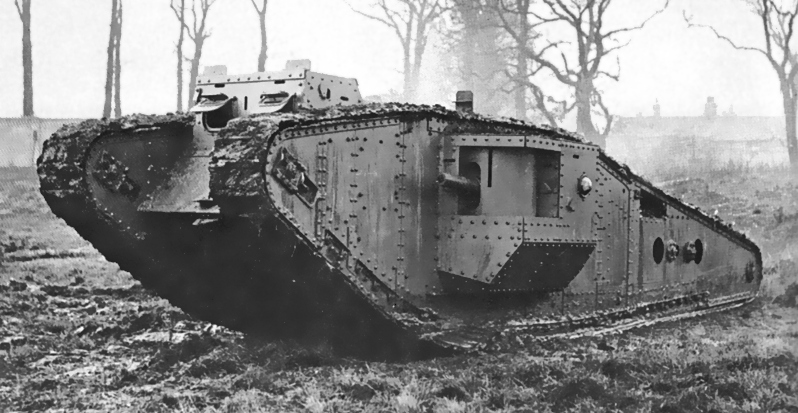Introduced in 1917 during the First World War, the British Mark IV tank benefited from significant developments made on its predecessor the Mark I. The Mark IV had a thicker armor as compared to the Mark I. Second was the re-siting of the fuel tank thus improving its fuel supply. A third improvement was modified sponsons with shorter guns. A final improvement was its easier transport capability.
The Mark IV was the most produced British tank in the First World War. In all 1220 units were built: 420 “male” and 595 “female” tanks. The males had two QF 6 pounder and three machine guns. The females had five .303 Lewis machine guns. In addition, 205 Tank Tenders, unarmed vehicles used to carry supplies, were also built.
The Mark IV came to prominence in action during the British assault on Messines Ridge on June 7, 1917. Forced to cross dry but heavily cratered terrain, many of the sixty-plus tanks lagged behind the infantry, but several made key contributions to the battle that day.
Later at the Battle of Cambrai in November 1917, 470 Mark IV tanks were deployed in action. The hard fought battle showcased many of the limitations of the Mark IV during which many were damaged, broken or bogged down or outright destroyed. By the second day of battle, only half of the tanks remained in operation. Despite the heavy losses, the tanks, however, showed their effectiveness as a part of the overall Allied fighting force in combination with traditional infantry and artillery. As a result of this combined and integrated fighting approach, the Battle of Cambrai ended in victory for the Allies.
The Mark IV’s greatest test would come in April 1918 during the Second Battle of Villers-Bretonneux when they would be tested in the first ever tank versus tank battles against the German A7V in the aftermath of the German Spring Offensive on the Western front.
Following WWI, the final Mark IV to see service was “Excellent,” a male model retained by the naval gunnery school on Whale Island in Hampshire. In the early days of WWII, “Excellent” was restored to operational status and driven to the mainland.
In this video, David Fletcher, MBE, a tank pilot who has operated the Mark IV shares with us his experiences and expertise with this classic machine of WWI. Included in the video are vintage photos and actual footage of the Mark IV in combat action from the hallowed battlefields of WWI.
https://www.youtube.com/watch?v=vgy9AeXmZJY
